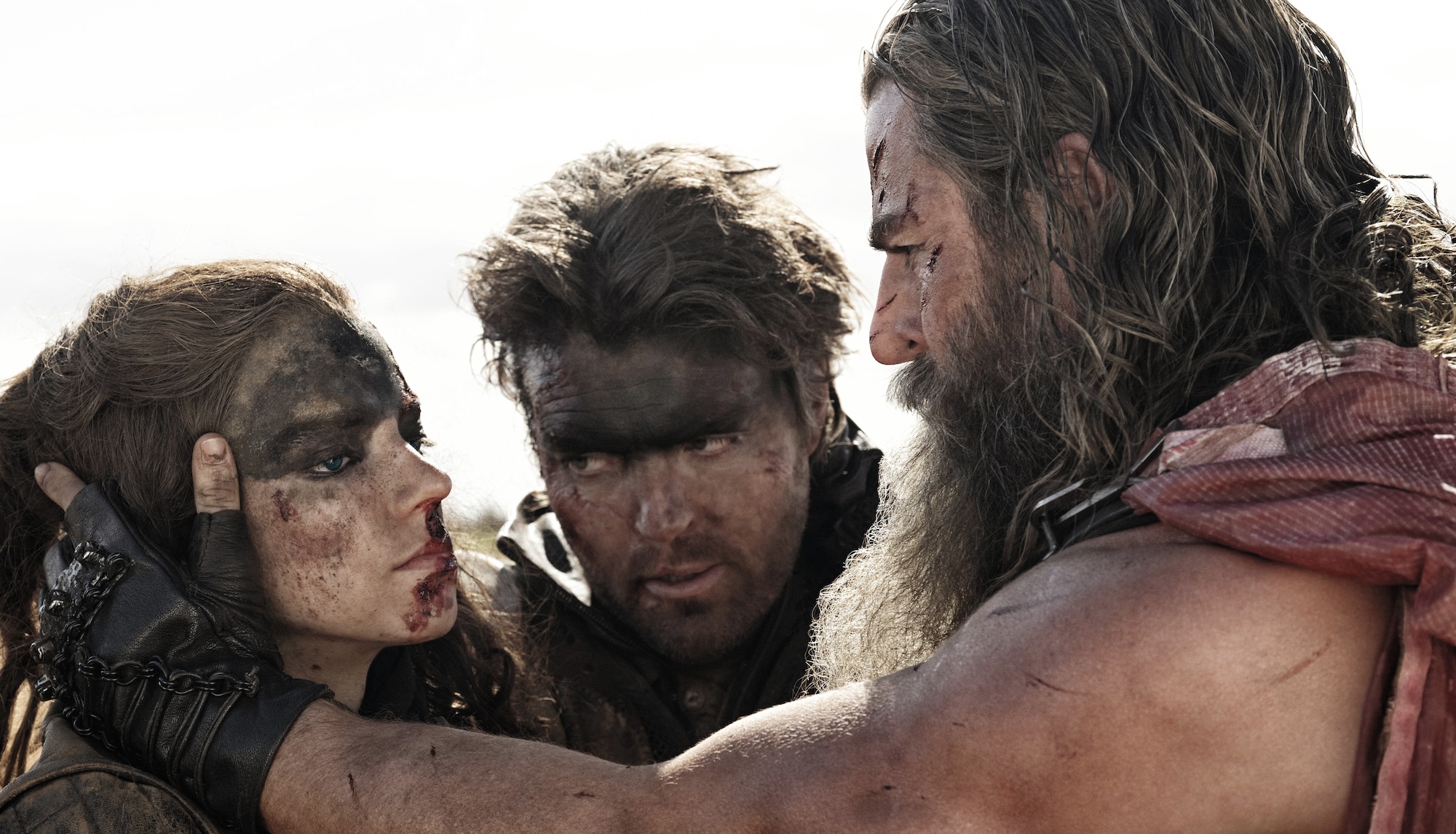
“What do you people out there want?!” a Warner Bros. executive might be forgiven for asking after arguably the worst Memorial Day weekend box office in 40 years. Despite Furiosa: A Mad Max Saga opening to glowing reviews, glitzy standing ovations at the Cannes Film Festival, and as part of a revered IP franchise whose last installment is considered one the best summer movies ever—Mad Max: Fury Road is a six-time Oscar winner!—the prequel’s box office still marked the lowest debut for a number one Memorial Day release since Indiana Jones and the Temple of Doom. And that came out in 1984.
Estimated to have grossed $31 million over the four-day weekend (and a meager $25 over the three-day) Furiosa’s first weekend box office bow is playing in the same neighborhood as when Harrison Ford’s archaeologist went to India and and Luke Skywalker fighting Darth Vader was considered a novelty (Return of the Jedi opened at $30.5 million on the same weekend in 1983, unadjusted for inflation). There in fact remains debate whether Furiosa will even top The Garfield Movie when the final numbers come in. These are bleak returns for a film that, personally, stands as one of the most visually dazzling action films of the current decade and a testament to the talent of George Miller and his ferocious choice for leads, Anya Taylor-Joy and Chris Hemsworth. However, it would seem audiences disagree—or perhaps they would if enough of them showed up at the theater to at least match Fury Road’s $45.4 million debut in three days nine years ago (which is about $58.4 million when adjusted to 2023 dollars).
The finger-pointing has already begun with some industry watchers pointing out that Mad Max has always been a niche franchise, going back to the fact that its origins are in gritty, R-rated exploration cinema from the 1970s. While the scale of Max’s adventures has increased the more interwoven he became with Hollywood, there might always be a ceiling for ultra-violent, post-apocalyptic tales that are rated R. But even if that is so, the reportedly $168 million-budgeted Furiosa isn’t scraping the roof which was measured out by Fury Road.
There are myriad other factors, including the dispiriting prospect that heavily male-skewing audiences for the Mad Max films might have lost interest in Furiosa because it starred a woman alone in the driver’s seat. There is also the rising argument that audiences simply do not care about prequels which recast beloved characters, even though at least on the last bit Fury Road succeeded despite Tom Hardy stepping into the boots left by Mel Gibson. Prequels about Obi-Wan Kenobi have, meanwhile, never had trouble generating interest. Whatever Furiosa‘s specific hurdles though, we might suggest it is also impossible to ignore the elephant in the room: May 2024 is beginning to look like one of the worst non-pandemic summer season kickoffs in decades.
Rather than being an anomaly, Furiosa’s dramatic stumble contributes to a trend that includes The Fall Guy hosting the worst summer-movie-season launch since 2004, with the Ryan Gosling and Emily Blunt-led action-comedy earning a meager $27.8 million. Notably also the first May not to begin with a Marvel Studios movie dominating the box office since 2014 (again excluding the pandemic years), this May seems indicative of something going on with moviegoers’ tastes in 2024… although don’t believe anyone who tells you they’re absolutely certain what those tastes are.
In fact, it’s striking how the failures of both The Fall Guy and Furiosa seem to offer almost contradictory lessons for the industry. The first is an old-school star vehicle in the style of summer tentpoles from the 1990s. Technically The Fall Guy is also an IP movie since it’s based on an early 1980s Lee Majors TV series, but since the target demo for the film was born a decade or more after that show’s run, the film looked and was marketed as essentially an original property carried by the perceived star power of its two leads.
The Fall Guy’s failure, and the following weekend’s over-performance of Kingdom of the Planet of the Apes, which marked the 10th(!) installment in that nearly 60-year-old franchise, seemed to suggest that despite the success of Oppenheimer last year, audiences still preferred intellectual property they were familiar with. After all, the biggest hit of 2024 has thus far been Dune: Part Two, a sci-fi epic based on a novel with legions of fans and which utilized a showy Gen-Z cast to great effect on social media. And yet, Furiosa is another franchise film that extends a brand which in 2015 at least showed remarkable pop culture cache, and Taylor-Joy remains one of the most popular actresses to breakout in the streaming age thanks to The Queen’s Gambit. THR indeed ranked her as one of the 10 most popular young actors in the industry today alongside Zendaya and Timothée Chalamet.
In other words, if The Fall Guy looked like a gamble that went back to “the old ways,” Furiosa was as sure a bet as at least Kingdom of the Planet of the Apes, which unlike Furiosa changed out the creative team of the last audience-embraced hit. Nonetheless, George Miller’s epic is opening not only below Apes, but even last weekend’s IF, an actual original movie from director John Krasinski. Also with that family movie budgeted at only $110 million, a $33.7 million opening looks a lot rosier.
Hence the absolute sense of mystery (and perhaps mild panic) descending into some corners of Hollywood this month. What do audiences want if they’re ignoring not just original(ish) projects a year after the “Barbenheimer” phenomenon, but also IP events greenlit because they were expected to play to the Comic-Con Hall H demographic? It would be a fool’s errand to offer any absolute answer, but we’ll provide some mild speculation about the confluence of challenges facing the studios.
The variety of factors contributing to diminished moviegoing are legion: streaming, an increasingly minuscule theatrical window, a pandemic altering viewing habits, runaway ticket price inflation, and the rise of short-form video sharing social media apps like TikTok. All of the above are adding to the decline in cinema’s importance in the weekly social lives of young people. However, the other underlying problem seems to be that neither studios nor exhibitors have discovered a long-term solution to counteract that erosion. Continually raising ticket prices well above natural levels of inflation gave exhibition a short-term shot in the arm during the 2010s, but it also made moviegoing an increasingly expensive, and therefore cost-prohibitive, option to the audiences who were already turning away. Similarly, audiences who sat out The Fall Guy because they figured it would be on streaming soon were rewarded yet again when Universal put it on PVOD after only three weekends.
Meanwhile the ever-eager need for media conglomerates to consolidate resources has over the last 15 or 20 years led to an executive class terrified of risk. But whether it is a true work of art released in the franchise system like Furiosa, or last year’s far less ambitious fiscal calendar placeholders like The Flash, The Marvels, and Fast X, it turns out you can eventually hit diminishing returns in feeding audiences the same stories or characters on repeat.
While we don’t have an answer on how to address the consequences of these various problems, their cumulative effect smells a bit like the uneasy Hollywood years of 1967 or ‘68, if not the paradigm-breaking moment of ‘69. At the end of that decade, the Baby Boomer generation had little interest in their parents’ favorite genres (Westerns and musicals) at the exact moment both had never become more expensive. Heck, 1969 saw the release of Paint Your Wagon, a Western and musical that starred Clint Eastwood. And the next generation of audiences could not have cared less.
It seems that the glory days of franchised IP might similarly be numbered when even transcendent examples of big budget moviemaking can flop. Of course other such films are also succeeding this year, such as the aforementioned Apes and Dune: Part Two, but it remains to be seen if that continues as the rule instead of the exception. As superhero fatigue seems to continue to be a demonstrable phenomenon, audience tastes are definitely changing and it is up to Hollywood’s executive class to be frankly bolder and more daring if they wish to figure out what their prospective audience wants.
Consider that while this spring has been helter skelter for the studio tentpoles, the season has also seen niche and indie successes like A24 and Alex Garland’s Civil War grossing $112 million globally off a $50 million budget, and the Zendaya-fronted Challengers taking home a respectable and steamy $80 million on a $55 million budget. Both prove younger moviegoers can still be motivated to enter a theater, but their tastes are perhaps beginning to diversify as much as their entertainment options already have. The days of chasing a big billion-dollar grosser by spending a quarter of that amount could be winding down. Of course how an industry that’s become entirely shaped to subsist on those tentpoles can survive at its current size would also be a hell of a mystery all its own.
Be that as it may, there is an audience out there for new movies, and this summer could very well turn into a months-long plea to studios to figure out how to reach them.
The post Furiosa Box Office Crash Sounds the Alarm Bell for the Summer Movie Season appeared first on Den of Geek.








